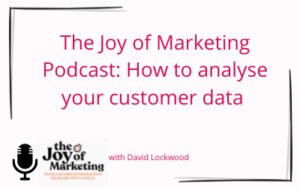If retail figures from 2020 have shown us anything, it’s that older customers took to ecommerce in their droves during lockdown. In fact, almost half of over-65s (49%) have increased their purchase frequency. The 65+ age bracket is just as likely (43%) as the average consumer (42%) to have shopped more online since the beginning of the pandemic. And from working closely with multi-channel retailers this year, we can see this trend is set to continue.
So how can retail brands tap into this shift in behaviour and make the most of their marketing channels to retain mature audiences in 2021?
1. Build trust over time
Research shows that older customers place more importance on building trust in a brand over time. They tend to pre-research their purchases for a longer period, so organic search and brand paid search are key to catching their attention when they first start looking. Mature customers also tend to pay more attention to reviews and recommendations. This means than brands should encourage customers to leave reviews wherever possible.
Also, as older customers are more likely to engage with multiple emails than any other age group, don’t be afraid to repeat your marketing messages as part of a wider ‘nurture campaign’. These are structured, time-based communications informing your audience of your brand and a particular offer, and, over time, motivating them to take action.
2. Maximise the marketing mix
As David Lockwood says in a recent Retail Commerce Discussion, older customers are more likely to use tablets for shopping than anyone else. Their time spent on mobile is also rising rapidly – in fact, it’s now higher than most millennials. As older customers purchase more technology, and spend more time on their devices, this provides more frequent opportunities for online shopping.
Habits such as second screening – e.g. checking a phone or tablet during a TV commercial break – presents a huge opportunity for brands to reiterate their marketing message across multiple channels at the same time. This will keep them front of mind as users switch between devices.
Despite the rise in ecommerce and digital channels for older customers, offline channels such as bricks-and-mortar stores and direct mail will still play a significant part in the customer journey. It means that retailers should not focus too heavily on any one channel as we head into 2021. A multi-channel marketing strategy is greater than the sum of its parts. While both print and digital are good at driving response, the power of using both in parallel is far greater than using either in isolation. Likewise, reaching customers through a mix of ‘lean-in’ media (e.g. browsing with intent on a tablet) and ‘lean-back’ media (browsing a catalogue in the bath, or watching television) will be key to sustaining engagement.
3. Deliver a safe and secure shopping experience
For older customers, part of the trust-building process is feeling comfortable about making purchases online. It’s why mature audiences often stick to reputable brands that are perceived to have a more secure website. To gain trust, you need to make sure your website infrastructure (i.e. point of sale system, encryption technology or fraud detection) is geared towards protecting customers and enabling smooth, stress-free transactions. It will also help to reassure the customer by telling them about your security process during their purchase journey.
4.Keep it social
The rise of social seniors is providing retailers with a vast opportunity to reach new audiences. Facebook and YouTube are currently top-performing platforms, with 46% of over 65s and 93% of over 55s using them respectively. On average, over 55s watch 22 minutes of video each day. Meanwhile, there is a steady increase in the number of older customers using Pinterest and Instagram. Therefore, it’s important to run campaigns dedicated to older customers across all existing social platforms and explore the potential impact of adding new channels to the social mix. TikTok for Grandma, anyone?
5. Get personal
As many retailers are finding, older customers like learning about the benefits of a product or service first-hand from a brand or its customers. For instance, Dr Max Gowland of supplement company Prime Fifty explains that the personable nature of QVC, coupled with live demonstrations, really helps to drive sales. It means that creating helpful videos around your products could significantly increase engagement.
Meanwhile, using age-appropriate photos will resonate more with a mature audience. As Woman & Home’s Executive Editor, Miranda McMinn observes, when they use photos of older individuals, they are “inundated with positive responses”. Older customers “aren’t aspiring to be younger” than they are. They simply want to “see people who look like us, but slightly better”.
When it comes to customer service, older customers are less keen to communicate with chatbots and prefer speaking to a human to resolve their problem. Our clients’ data shows that campaigns prompting customers to pick up the phone result in higher conversions and higher order values. With that in mind, make sure your call-to-action includes a phone number, and that it’s visible on each landing page, email, display ad, print media etc.
We’re entering an exciting era of ecommerce in which older customers are primed to consume a variety of content across a variety of devices. Investing in a long-term, multi-channel marketing strategy delivering high-quality content at every touchpoint will be key to retaining this new cohort of brand ambassadors.




